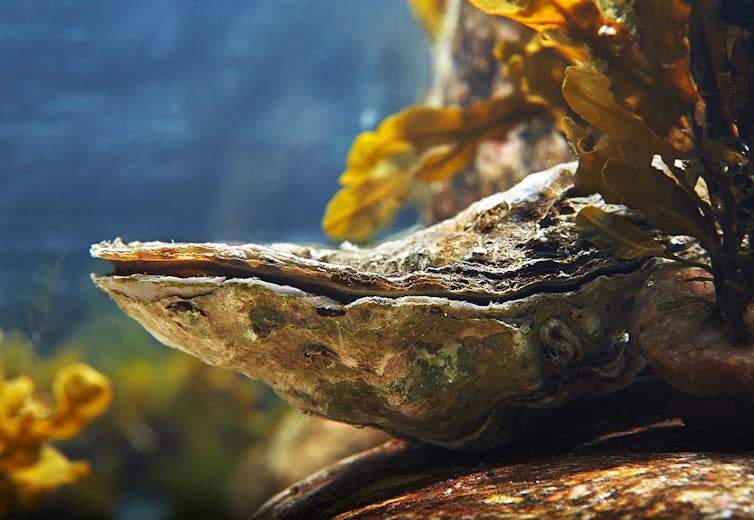by Audrey-Maude Vézina*
Canada – An international research shows that the exposure of oysters to nanoplastics and arsenic could affect their biological functions.
Oysters’ exposure to plastics is concerning, particularly because these materials can accumulate and release metals which are then absorbed by the molluscs. According to a recent study published in the journal Chemosphere, the combined presence of nanoplastics and arsenic affects the biological functions of oysters. This study was conducted by the Institut national de la recherche scientifique (INRS) in Québec City and the French National Centre for Scientific Research (CNRS) at the University of Bordeaux in France.
The international research team chose to study arsenic, since it is one of the most common metals absorbed by the plastic debris collected from the beaches of Guadeloupe.
The scientists proved that the bioaccumulation of arsenic does not increase when nanoplastics are also present. However, it remained higher in the gills of the Canadian Crassostrea virginica oyster than in the Isognomon alatus oyster, found in Guadeloupe. These results are the first to highlight the diverging sensitivity of different species.
Gene deregulation
In addition to bioaccumulation, the team also observed an overexpression of genes responsible for cell death and the number of mitochondria—a cell’s energy centres—in C. virginica.In I. alatus, the expression of these same genes was less significant.
“Evaluating the expression of genes involved in important functions, such as cell death and detoxification, gives us information on the toxicity of nanoplastics and arsenic on a cellular level,” explained the young researcher, who is co-directed by Professors Valérie Langlois of INRS and Magalie Baudrimont of the University of Bordeaux.
The food chain
The next step, after characterizing the presence of nanoplastics and arsenic in oysters, would be to study how these contaminants are transferred through the food chain.
“Analytical tools are currently being developed to quantify the presence of nanoplastics in biological tissues,” said Marc Lebordais. “Understanding the amount of nanoplastics in farmed oysters currently boils down to a technical issue.”
Stay Always Informed
Join our communities to instantly receive the most important news, reports, and analysis from the aquaculture industry.
The study received financial support from the French National Research Agency (ANR), the CNRS, and from Canada Research Chairs.
Reference (open access):
Marc Lebordais, Juan Manuel Gutierrez-Villagomez, Julien Gigault, Magalie Baudrimont, Valerie S. Langlois. Molecular impacts of dietary exposure to nanoplastics combined with arsenic in Canadian oysters (Crassostrea virginica) and bioaccumulation comparison with Caribbean oysters (Isognomon alatus), Chemosphere, Volume 277,
2021, 130331, ISSN 0045-6535, https://doi.org/10.1016/j.chemosphere.2021.130331.
*Source: Institut national de la recherche scientifique (INRS)
Editor at the digital magazine AquaHoy. He holds a degree in Aquaculture Biology from the National University of Santa (UNS) and a Master’s degree in Science and Innovation Management from the Polytechnic University of Valencia, with postgraduate diplomas in Business Innovation and Innovation Management. He possesses extensive experience in the aquaculture and fisheries sector, having led the Fisheries Innovation Unit of the National Program for Innovation in Fisheries and Aquaculture (PNIPA). He has served as a senior consultant in technology watch, an innovation project formulator and advisor, and a lecturer at UNS. He is a member of the Peruvian College of Biologists and was recognized by the World Aquaculture Society (WAS) in 2016 for his contribution to aquaculture.




